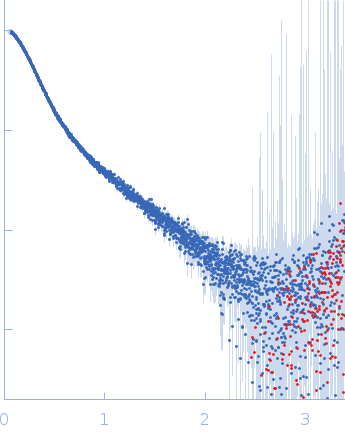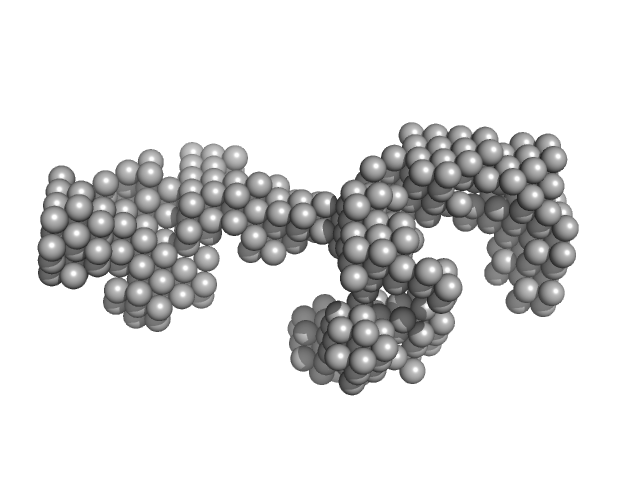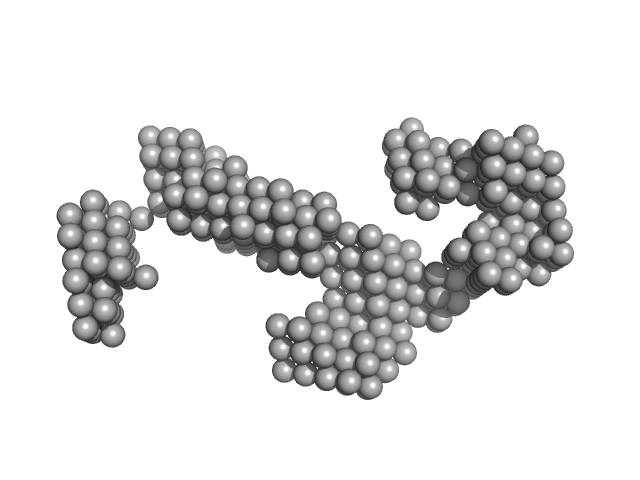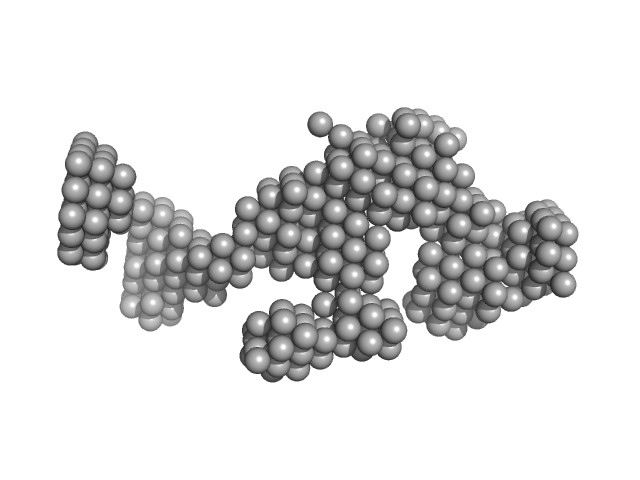| MWexperimental | 89 | kDa |
| MWexpected | 90 | kDa |
| VPorod | 375 | nm3 |
|
log I(s)
7.38×10-2
7.38×10-3
7.38×10-4
7.38×10-5
|
 s, nm-1
s, nm-1
|
|
|
|

|
|

|
|

|
|
Synchrotron SAXS data from solutions of LincRNA-p21 antisense Alu inverted repeat in 50mM HEPES,150 mM NaCl, 15 mM MgCl2, 3% glycerol, pH 7.4 were collected on the B21 beam line at the Diamond Light Source (Didcot, UK) using a Pilatus 2M detector at a wavelength of λ = 0.154 nm (I(s) vs s, where s = 4πsinθ/λ, and 2θ is the scattering angle). In-line size-exclusion chromatography (SEC) SAS was employed. The SEC parameters were as follows: A sample at 2.5 mg/ml was injected onto a column . 600 successive 3 second frames were collected. The data were normalized to the intensity of the transmitted beam and radially averaged; the scattering of the solvent-blank was subtracted.
SEC column parameters: UNKNOWN. Sample temperature: UNKNOWN. |
|
|||||||||||||||||||||